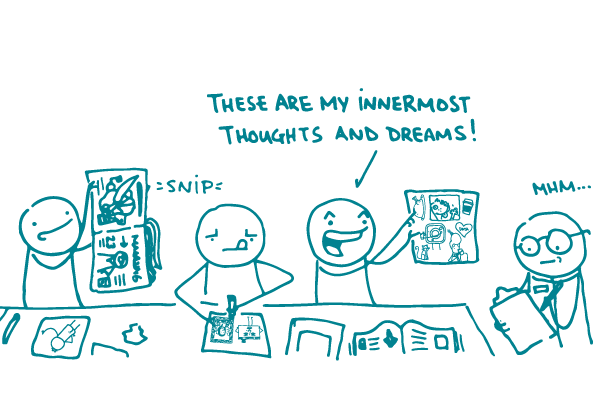
Does the term “collaging” ring any bells for you, dear readers? From grade-school art class, perhaps? Maybe you pasted together images to represent your hopes and dreams, and they told a clearer story than you could have communicated with words alone.
That’s also the idea behind collaging as a testing technique! Collaging is an innovative way to learn things that participants aren’t likely to come out and say directly.
According to Dr. Gerald Zaltman, who founded the technique (also known as the Zaltman Metaphor Elicitation Technique) at Harvard Business School, collaging helps you learn “what people don’t know they know.” A lot of our thinking happens at the subconscious or unconscious level, and images can help these hidden thoughts surface.
Collaging uses images to draw out participants’ values, emotions, and mental frameworks. It works best as a formative or exploratory research activity — when you want to find out what people need or how they think about a particular topic. And since the focus is on images instead of words, it’s especially useful for participants with limited literacy skills.
You can do collaging as a 1-on-1 exercise or in a focus group setting. Here’s how it works:
- Participants get a collection of images (all participants get the same ones)
- The moderator asks participants to create a collage that represents their values, beliefs, or desires related to a particular topic
- After about 20 minutes, participants share their collages and talk about what each image represents for them
And while this technique works great in person, it’s easy to adapt for remote formats, too. Platforms like Aha! Live Conversations let you move the whole collaging process online.
We see collaging as a win-win: it can empower participants to share stories and make connections they’ve never thought about — and reveal insights that researchers never knew to ask about. Yes, please!
The bottom line: When words aren’t quite getting you there, try collaging as a testing technique.
Browse recent posts